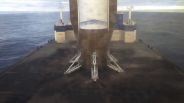Archives
-
Science Says These Eminem Songs Can Improve Athletic Performance
-
Huawei Mate 8 Price Leaks For Two Versions Ahead Of Nov. 26 Launch
-
Comcast Now Offers Unlimited Data, But Only If You Pay An Extra $35
-
Diamonds May Not Be As Rare As Once Thought: Study
-
Overall US Death Rates Decline But Middle-Aged White Americans See Spike In Mortality Rate: Why?
-
Nexus 6P Bendgate Not Over Yet: New Bend Test Shows Freshly Unboxed Nexus 6P Easily Breaks In Half
-
Sweetener In Sugarless Gums Cause Surge In Dog Poisoning
-
No Heart For Twitter’s New Heart Likes? Here’s How To Get Your Star Favorites Back
-
Menu Calorie Counts Do Not Work On Diners But Lead To Restaurants Serving Healthier Options
-
Scientists Discover Protein That Can Improve Mapping Of Brain Tumor [Video]
-
Cotard Disease: Rare 'Zombie' Disease Makes The Living Think They Are Dead
-
Living Alone Linked To Poor Diet: Single People Eat Fewer Fruits, Veg And Opt For Ready-Made Meals
Most Popular




